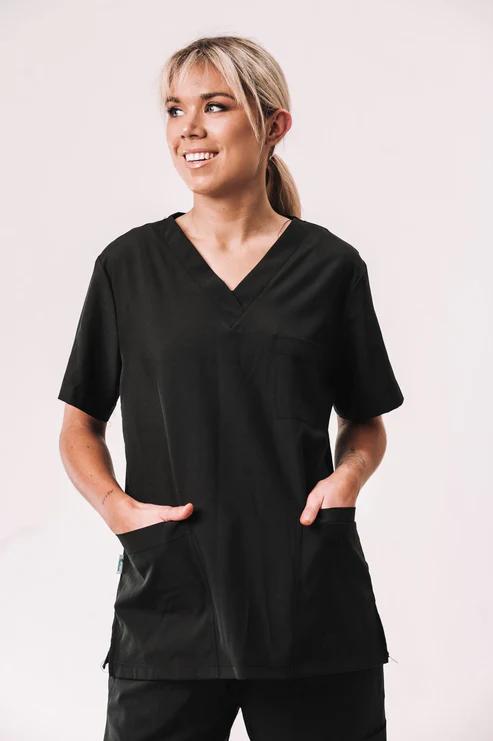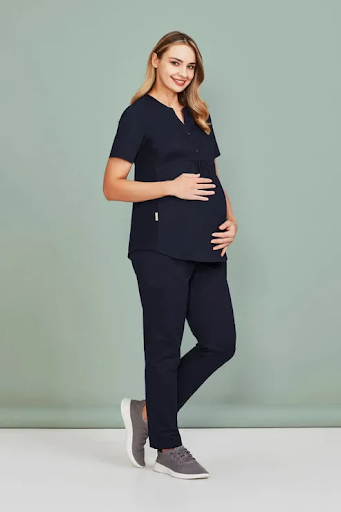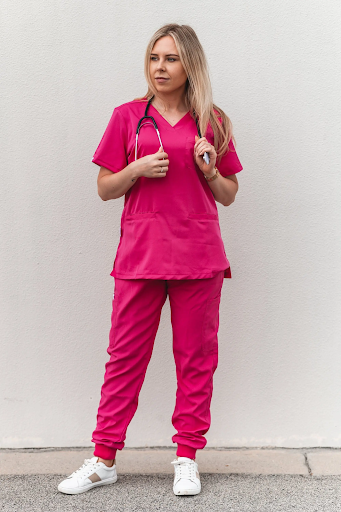
Finding the right nursing uniform isn’t just about picking a colour or fit—it’s about choosing a fabric that supports your comfort, mobility, and performance throughout long, demanding shifts. Whether you're just entering the healthcare field or upgrading your current medical scrubs, understanding fabric types and blends is essential.
In this guide, we’ll break down everything you need to know about nursing uniform fabrics so you can make a smart, long-lasting investment that keeps you looking and feeling your best on the job.
Why Fabric Matters in Nursing Uniforms
Healthcare professionals are on their feet for hours, dealing with everything from sudden spills to fast-paced emergencies. The right fabric blend in a nursing uniform ensures:
Comfort during long shifts
Durability through repeated washing and daily wear
Flexibility for easy movement
Moisture control to manage sweat
Professional appearance that lasts
Choosing the wrong fabric can lead to discomfort, poor performance, and even skin irritation, especially in high-stress environments like hospitals, clinics, and urgent care centres.
Most Common Fabrics Used in Nursing Uniforms
1. Cotton
Cotton is soft, breathable, and gentle on the skin. It's a natural fabric that offers comfort and reduces the risk of irritation.
Pros:
Highly breathable
Comfortable and soft
Hypoallergenic
Cons:
Shrinks easily
Wrinkles quickly
Not as durable without blending
2. Polyester
Polyester is a synthetic fibre often blended with natural materials to improve strength and durability. It’s moisture-wicking and resistant to stains and wrinkles.
Pros:
Durable and long-lasting
Quick drying
Resists wrinkles and stains
Cons:
Less breathable than natural fibres
Can feel less soft without a cotton blend
3. Spandex (or Elastane)
Used in small amounts, spandex adds stretch and flexibility to the uniform, making it easier to move freely throughout your shift.
Pros:
Enhances fit and flexibility
Allows full range of motion
Helps scrubs hold shape
Cons:
Not used alone—typically blended
It can lose elasticity over time with improper care.
4. Rayon
Rayon is a semi-synthetic fibre known for its soft texture and breathable qualities. It's often used in blends to add comfort and drape to uniforms.
Pros:
Lightweight and soft
Breathes well in warm settings
Drapes nicely
Cons:
Delicate—requires gentle washing
May shrink or wrinkle without proper care
Popular Fabric Blends in Medical Scrubs
Most medical scrubs are made from fabric blends that combine the best qualities of multiple fibres. Here are some commonly used combinations:
Cotton-Polyester Blend (65%/35% or 55%/45%)
Comfortable and breathable
More durable than pure cotton
Wrinkle- and stain-resistant
Ideal for low-maintenance care
Polyester-Spandex Blend
Lightweight and stretchy
Retains shape well
Excellent for fitted or athletic-style scrubs
Moisture-wicking
Rayon-Polyester-Spandex Blend
Ultra-soft with a smooth finish
Great for performance wear
Has both stretch and breathability
Common in premium or fashion-forward uniforms
Factors to Consider When Choosing Fabric
1. Work Environment
Emergency rooms, pediatric clinics, and surgical centres—each has different demands. High-mobility or fast-paced roles benefit from stretch blends, while administrative nursing may allow for softer, more stylish fabrics.
2. Comfort and Breathability
If you work in a warm climate or a high-activity role, opt for fabrics that allow airflow and wick moisture. Lightweight cotton or rayon blends are excellent choices.
3. Durability
Will your uniform hold up after hundreds of washes? Polyester-heavy blends tend to last longer without fading, shrinking, or fraying.
4. Ease of Maintenance
Look for wrinkle-resistant, machine-washable options that don't require special care. Blends with polyester and spandex generally require minimal upkeep.
5. Fit and Feel
Some fabrics feel stiff while others offer a buttery-soft finish. Try a few options to find what suits your skin, fit preferences, and movement style best.
Final Thoughts
A great nursing uniform starts with great fabric. Whether you're prioritising softness, durability, or stretch, understanding the materials used in medical scrubs can help you choose the perfect set for your role and routine.










Write a comment ...